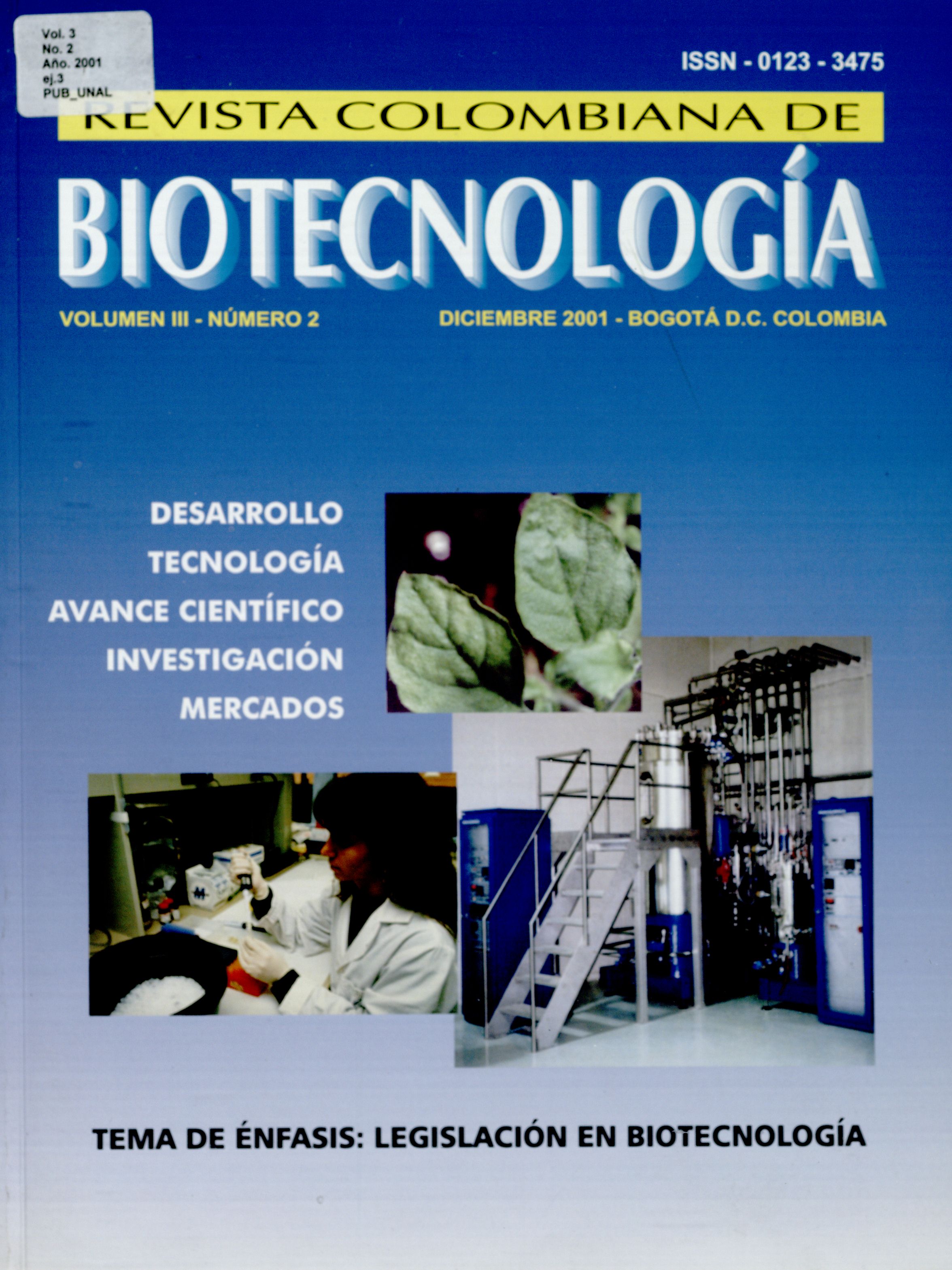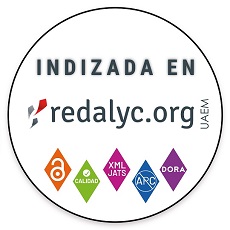Caracterización molecular de algunas especies y variedades de ñame presentes en la Costa Atlántica colombiana
Molecular characterisation of some species and varieties of yam present on the Colombian Atlantic Coast
Keywords:
AFLR caracterización, ñame, Dioscorea spp, dendograma (es)AFLFJ characterization, yam, Dioscorea spp, dendogram (en)
Downloads
En Colombia el ñame (Dioscorea data y Dioscorea rotundata) es un cultivo de importancia para los pequeños productores de la Costa Atlántica. El Programa Colombiano de Biotecnología Agrícola (PBA) de Ñame tiene el objetivo de incrementar la sostenibilidad de grupos de campesinos de la región, adelantando investigaciones participativas en diferentes aspectos relacionados con el cultivo. En el presente trabajo, el objetivo principal fue caracterizar molecularmente las ocho variedades de ñame utilizadas en el PBA, a través de marcadores moleculares tipo AFLP para determinar si existe concordancia entre la taxonomía morfológica establecida para la clasificación de las especies y variedades con la discriminación y agrupación de los individuos por sus perfiles de bandas moleculares aportados por los AFLP Para la obtención de los patrones de AFLP se utilizaron los kits de Gibco-BRL, New York Analysis System I y Analysis System II, siguiendo los manuales de instrucción. Para el análisis estadístico se realizaron matrices de presencia ausencia, se determinaron las similitudes a partir del índice de similaridad de Dice con el paquete estadístico Gel Stats. Posteriormente, las matrices se transformaron en matrices de distancia, y a partir de éstas se construyeron los dendogramas utilizando como estrategia de agrupamientos UPGMA (Unweighted Pare Group Method Averange). Finalmente se realizó una comparación entre matrices utilizando el análisis de permutaciones de Mantel. Los resultados muestran que de las siete variedades de Dioscorea alata analizadas solamente tres de ellas presentan polimorfismos que permiten diferenciarlas. Las otras cuatro se agruparon como una sola variedad.
Seven varieties of the Dioscorea alata specie (but only one variety of the Dioscorea rotundata specie) have been morphologically characterised in Colombia. These varieties have been used in the Colombian Yam Agricultural Biotechnology Programme (ABP) to increase the sustainability of groups of poor rural workers from the Colombian Atlantic Coast by providing them with plants having good organoleptic characteristics and increased tuber yield. This work's main objective was the molecular characterisation of those varieties of yam from the Colombian Atlantic Coast used in the ABP, through Amplified Fragment Length Polymorphism (AFLP) molecular markers. This aimed at determining if there is conformity between that morphological taxonomy established for the classification of ABP programme species and varieties with the discrimination and grouping of individuals by their molecular band profiles provided by AFLP Seven varieties of D. alata specie and the sole variety of the D. rotundata specie were characterised. Gibco-BRL, New York Analysis System I and Analysis System II kits were used to obtain AFLP patterns, following handbook instructions. Presence/absence matrices were constructed for the statistical analysis; similarity was determined from the Dice similarity index by using the Gel Stats statistical package. Later matrices became distance matrices and dendograms were constructed from these by using UPGMA (Unweighted Pair Group Method Average) for grouping strategy. Comparison was then made between matrices by using Mantel permutation analysis. The results show that only three of all the seven Dioscorea alata varieties analysed presented polymorphism allowing them to be differentiated. The other four varieties were grouped as a sole variety or belonged to a single variety. These results have great importance for widening information concerning yam in Colombia, particularly for the Colombian ABR since it makes it possible to reduce collection and maintenance costs, leading to information regarding each accession to Colombia's germplasm banks to be increased. This is the first molecular characterisation work carried out in Colombia on yam species (Dioscorea spp.).
How to Cite
APA
ACM
ACS
ABNT
Chicago
Harvard
IEEE
MLA
Turabian
Vancouver
Download Citation
Article abstract page views
Downloads
License
Copyright (c) 2001 Revista Colombiana de Biotecnología

This work is licensed under a Creative Commons Attribution 4.0 International License.
Authors who publish in the journal are welcome to code Creative Commons 4.0 Attribution, non-commercial, no derivatives. That is, that even as the Colombian Journal of Biotechnology of free access, users can download the information contained in it, but should give attribution or recognition of intellectual property, should use it as is, without derivation and should not be used with commercial purposes. Creative Commons This work is under a Creative Commons Attribution 4.0 License International. You are free: Share - copy and redistribute the material in any media or format Adapt - remix, transform and create from the material for any purpose, including commercial. The licensor can not revoke these freedoms while complying with the terms of the license. Under the following conditions: Attribution - You must properly acknowledge authorship, provide a link to the license and indicate whether changes have been made <. You can do this in any reasonable manner, but not in a way that suggests that support the licensor or receives for his use. No additional restrictions - You can not apply legal terms or technological measures that legally restrict realize what the license allows. notices: You do not have to comply with the license for those elements of the material in the public domain or where their use is permitted by the application of an exception or a limit. No guarantees are given. The license can not provide all the necessary permits for the intended use. For example, other rights such as advertising, privacy, or moral rights may limit the use of the material.



















